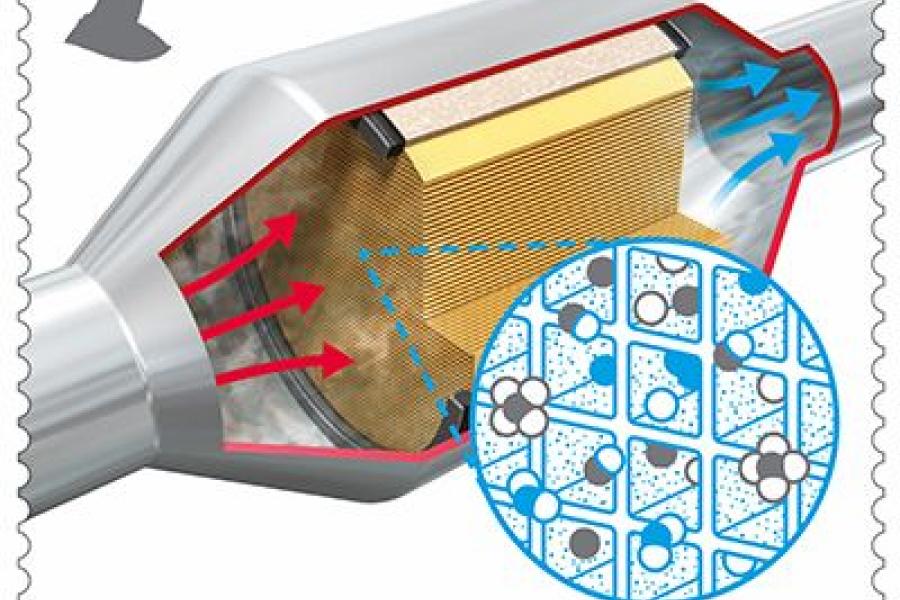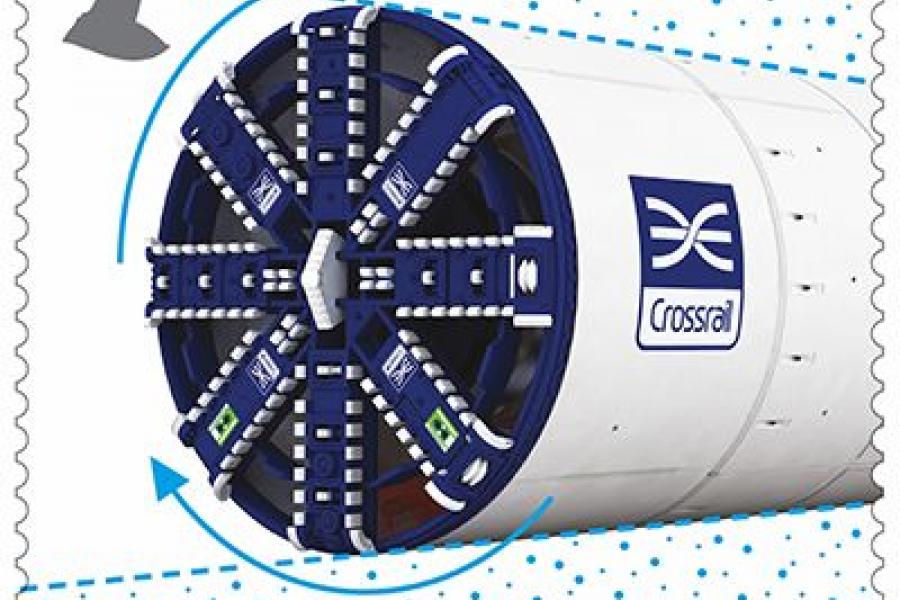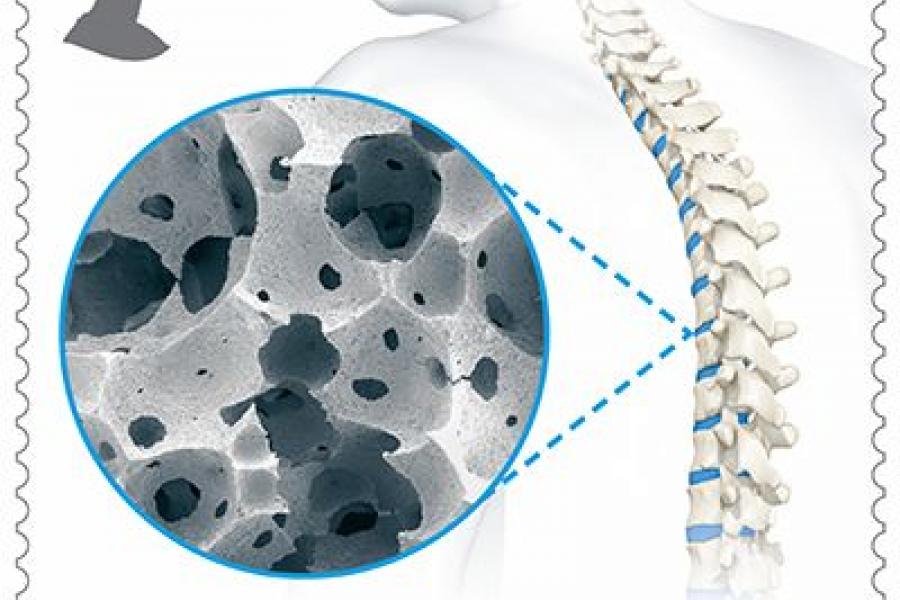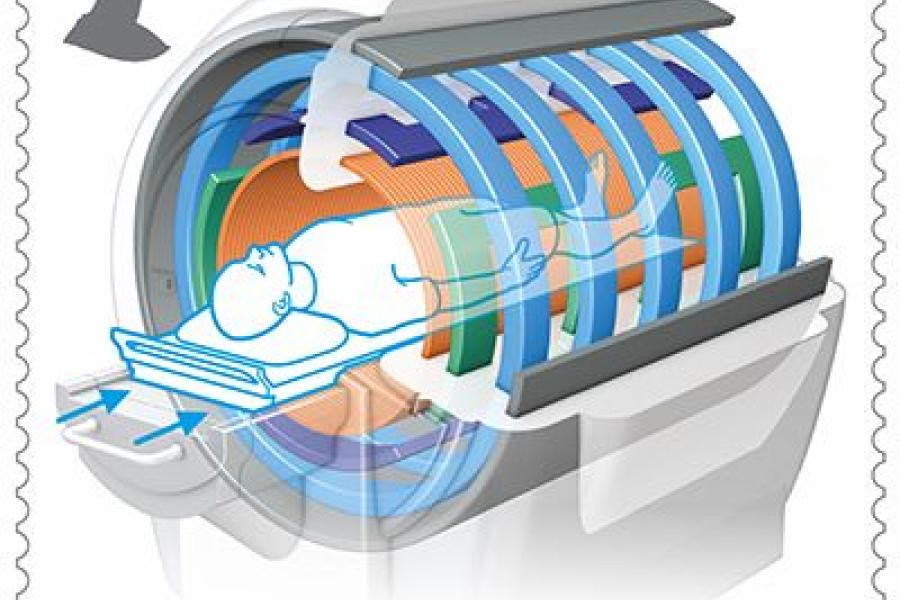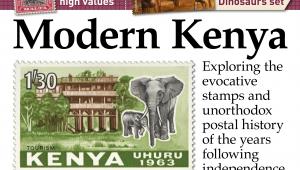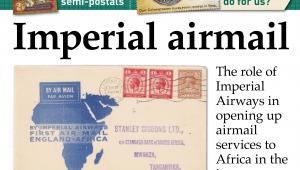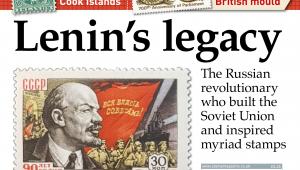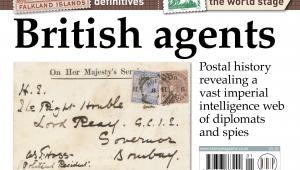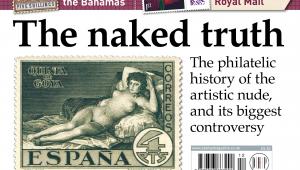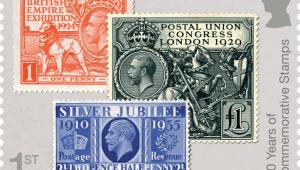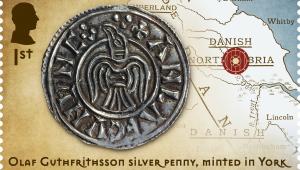British Engineering
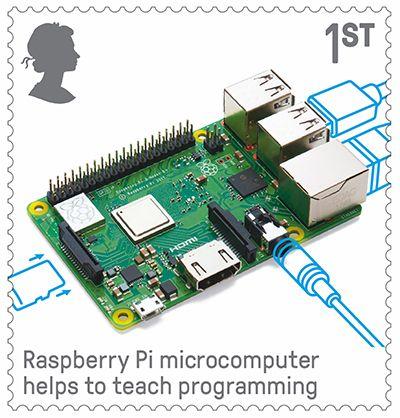
Released on May 2, the British Engineering issue showcases national innovations and achievements in a range of disciplines over the past 50 years.
The six stamps celebrate civil, electronic, chemical and biomedical engineering projects, while noting the 50th anniversary of the prestigious MacRobert Award for innovation, bestowed annually by the Royal Academy of Engineering.
An accompanying miniature sheet celebrates the the 50th anniversary of the Harrier GR3 ‘jump jet’, originally designed by Hawker Siddeley and later manufactured by British Aerospace (now part of BAE Systems), the world’s first fighter aircraft with short take-off and vertical take off capabilities, and even the ability to fly backwards.
In operation from 1969 until 2006, it used the innovative Pegasus turbofan engine developed by Rolls-Royce, with its vectoring nozzles to change the direction of thrust, which shared the first MacRobert Award in 1969.
The stamps were designed by Common Curiosity, from illustrations by Martin Woodward, and come in se-tenant pairs. The miniature sheet was designed by Turner Duckworth, from photographs, and the whole issue was printed in litho by International Security Printers.
1st class Raspberry Pi microcomputer
At just the size of a credit card, this versatile microcomputer has revolutionised education in computer science and programming worldwide, with more than 20 million sold since 2012. It was awarded the Royal Academy of Engineering’s MacRobert Award in 2017.
1st class Falkirk Wheel
The world’s only rotating boat lift, this beautiful structure reconnected the Forth & Clyde Canal and the Union Canal for the first time in 70 years when it was opened in 2002. It uses very little energy, as its ten motors use hydraulic power to rotate water-filled caissons on its two opposing arms.
£1.55 Three-way catalytic converter
Fitted to internal combustion engines worldwide, this device scrubs car exhausts of harmful gases by turning carbon monoxide, unburnt hydrocarbons and oxides of nitrogen into carbon dioxide, water and nitrogen, making cars far less polluting than they used to be. It won the Johnson Matthey Group the MacRobert Award in 1980.
£1.55 Crossrail
This new railway line connecting the western and eastern suburbs of London, still under construction, has required 13 miles of twin tunnels to be bored under the city, navigating their way around existing sewers, train tunnels and building foundations. Once up and running, and named the Elizabeth Line, it is expected to carry 200 million passengers annually.
£1.60 Superconducting magnets in MRI scanner
Magnetic resonance imaging (MRI) scanners, a powerful diagnostic tool in hospitals, would not be possible without the development of superconducting magnets in the 1960s and 1970s. Oxford Instruments was awarded the MacRobert Prize for this work in 1986.
£1.60 Synthetic bone-graft material
Engineered materials which bioactively encourage bone and stem cells to form new bone tissue have improved the outcomes of complex orthopaedic surgeries for hundreds of thousands of patients worldwide. They were developed by Dr Karin Hing and a team at Queen Mary University of London, who were awarded the Royal Academy of Engineering’s Silver Medal in 2011.
MINIATURE SHEET
1st class Short Take-Off
Pointing the thrust nozzles downwards allows the Harrier to take off vertically from standstill, so it can be operated away from conventional airbases.
1st class Conventional flight
The Harrier flies like a conventional fixed-wing aircraft, although it can brake and change direction more suddenly, which is useful in a dogfight.
£1.55 Transition to Landing
The Harrier slows down before the thrust nozzles are pointed downwards, taking over from aerodynamic lift to keep the aircraft airborne.
£1.55 Vertical Landing
The Harrier hovers stationary above its landing site, and its landing gear is deployed before the thrust is gradually decreased, allowing it to descend gradually.
OTHER PRODUCTS
The presentation pack has images and diagrams offering more information about each of the stamp subjects. First day covers and medal covers are available, along with stamp cards, and a limited-edition press sheet of 12 uncut miniature sheets.
PRICES
Set of 6 stamps £7.70
Miniature sheet £4.50
Presentation pack £13.00
Press sheet £59.40
Stamp cards £4.95
First day cover (stamps) £9.85
First day cover (mini sheet) £6.00
VERDICT
COMMEMORATIVE WORTH 4/5
Despite the weak anniversary link, these are achievements Britain can be proud of
QUALITY OF DESIGN 5/5
The sheet stamps’ clever illustrations do a great job of bringing invisible mechanisms to life
WOW FACTOR 2/5
Whether engineering detail will manage to catch the eye at stamp size is open to question


